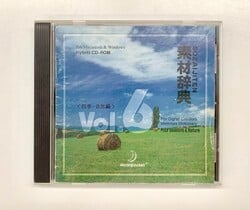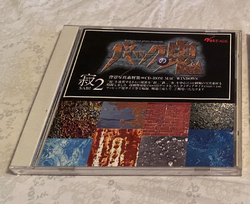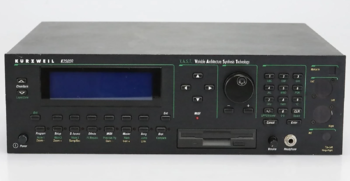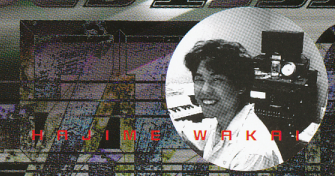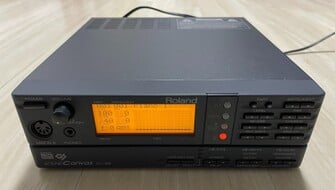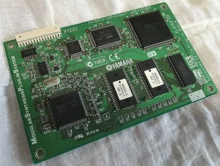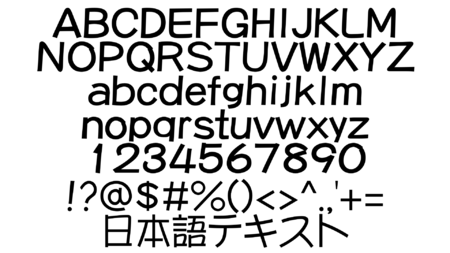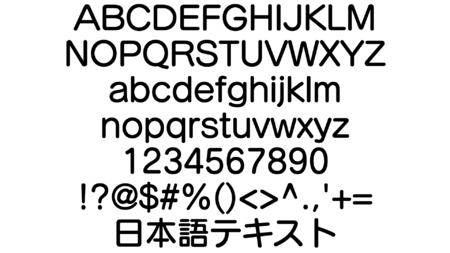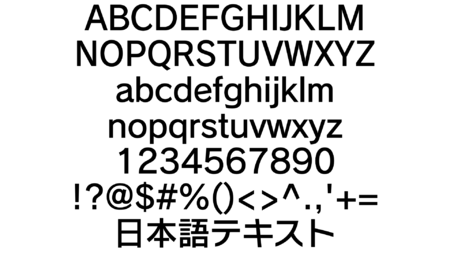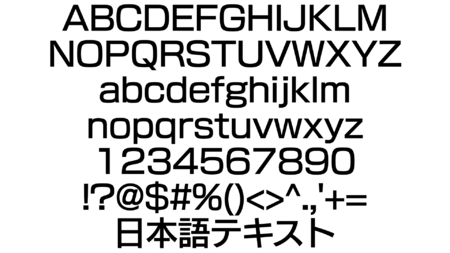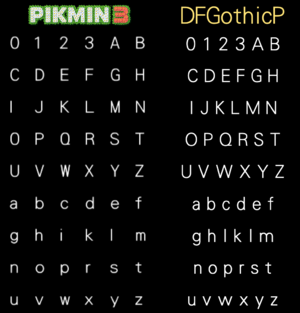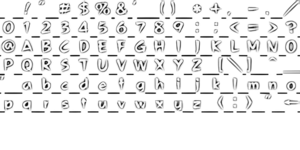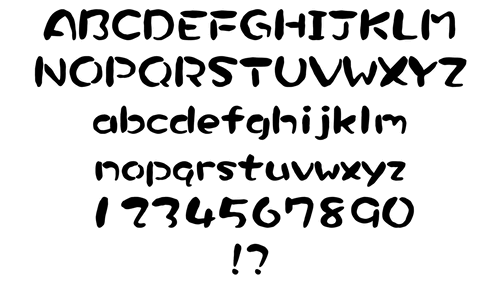Assets used in the Pikmin series: Difference between revisions
mNo edit summary |
(→Trivia: JAudio instruments were likely created in SampleCell) |
||
| (69 intermediate revisions by 6 users not shown) | |||
| Line 1: | Line 1: | ||
{{page title|Assets used in the ''Pikmin'' series}} | {{page title|Assets used in the ''Pikmin'' series}} | ||
[[File:Sozaijiten06 085.jpg|thumb|325px|A [[#Sozaijiten|stock image]] that was used in the ''Pikmin'' series.]] | |||
[[File:Horsetail Pikmin.jpg|thumb|325px|Promotional artwork for {{P1}} that was created using the photograph above.]] | |||
The [[Pikmin series|''Pikmin'' series]] and its world is built with distinct pieces of imagery, audio, and typefaces. A large portion of the assets used in the games are made from scratch and are proprietary to [[Nintendo]], though occasionally, some of these assets may be taken or contain elements from external sources. This can include commercially-available software libraries, or real-life objects and hardware. | The [[Pikmin series|''Pikmin'' series]] and its world is built with distinct pieces of imagery, audio, and typefaces. A large portion of the assets used in the games are made from scratch and are proprietary to [[Nintendo]], though occasionally, some of these assets may be taken or contain elements from external sources. This can include commercially-available software libraries, or real-life objects and hardware. | ||
| Line 6: | Line 8: | ||
=== ''Sozaijiten'' === | === ''Sozaijiten'' === | ||
[[File:Sozaijiten Vol 6 Cover.jpg|thumb| | [[File:Sozaijiten Vol 6 Cover.jpg|thumb|250px|The cover of ''Sozaijiten Vol. 6'', one of the CD-ROMs used in the ''Pikmin'' series.]] | ||
''Sozaijiten'' ({{j|素材辞典|Sozai Jiten|Material Dictionary}}) is a series of stock image libraries by Datacraft that is advertised and sold as volumes. The content of each volume is themed (usually around a type of material, part of nature, or event), and were originally distributed on singular CD-ROMs. For | ''Sozaijiten'' ({{j|素材辞典|Sozai Jiten|Material Dictionary}}) is a series of stock image libraries by Datacraft that is advertised and sold as volumes. The content of each volume is themed (usually around a type of material, part of nature, or event), and were originally distributed on singular CD-ROMs. For {{P1}} and {{P2}}, photographs and artwork from ''Sozaijiten'' are used very often and in a myriad of ways. | ||
On [http://www.sozaijiten.com/cdrom/lineup.asp?pt=0 ''Sozaijiten'''s website], low-resolution previews of every image are available for browsing. The previews come with descriptions; these reveal the original shooting location of certain photos, or some miscellaneous information about the photographed material. | On [http://www.sozaijiten.com/cdrom/lineup.asp?pt=0 ''Sozaijiten'''s website], low-resolution previews of every image are available for browsing. The previews come with descriptions; these reveal the original shooting location of certain photos, or some miscellaneous information about the photographed material. | ||
| Line 33: | Line 35: | ||
(Seasons and Nature) | (Seasons and Nature) | ||
| SF122 | | SF122 | ||
| [[File: | | [[File:Sozaijiten06 122.jpg|128px]] | ||
| [[File:Pikmin world map.png|128px]] | | [[File:Pikmin world map.png|128px]] | ||
| The mountains in the [[area selection menu]]. It is a photograph of {{w|Mount Kamui (Lake Mashū caldera)|Mount Kamui}} and {{w|Lake Mashū}}. | | The mountains in the [[area selection menu]]. It is a photograph of {{w|Mount Kamui (Lake Mashū caldera)|Mount Kamui}} and {{w|Lake Mashū}}. | ||
The approximate location is viewable [https://earth.google.com/web/@43.47691307,145.5945732,38.82452321a,89091.36919831d,35y,97.9214276h,89.94993779t,-0r/data=OgMKATA here]. | |||
|- | |- | ||
! Vol. 6 四季・自然編 | ! Vol. 6 四季・自然編 | ||
(Seasons and Nature) | (Seasons and Nature) | ||
| SF164 | | SF164 | ||
| [[File: | | [[File:Sozaijiten06 164.jpg|128px]] | ||
| [[File:Pikmin world map.png|128px]] | | [[File:Pikmin world map.png|128px]] | ||
| The main landmass in the area selection menu. It was taken in {{w|Shakotan, Hokkaido}}. | | The main landmass in the area selection menu. It was taken in {{w|Shakotan, Hokkaido}}. | ||
The approximate location is viewable [https://earth.google.com/web/@43.31194295,140.56885515,121.14944487a,650.20875074d,35y,-31.40251596h,77.05214621t,0.00000003r/data=OgMKATA here]. | |||
|- | |- | ||
! Vol. 13 葉・葉脈編 | ! Vol. 13 葉・葉脈編 | ||
| Line 57: | Line 61: | ||
| [[File:Perplexing pool treestump.png|128px]] | | [[File:Perplexing pool treestump.png|128px]] | ||
| The base of several wooden stumps in [[The Distant Spring]]. | | The base of several wooden stumps in [[The Distant Spring]]. | ||
|- | |- | ||
! Vol. 21 宇宙・惑星編 | ! Vol. 21 宇宙・惑星編 | ||
| Line 109: | Line 106: | ||
(Seasons and Nature) | (Seasons and Nature) | ||
| SF122 | | SF122 | ||
| [[File: | | [[File:Sozaijiten06 122.jpg|128px]] | ||
| [[File:P2 World Map Stripped.png|128px]] | | [[File:P2 World Map Stripped.png|128px]] | ||
| The mountains in the area selection menu. It is a photograph of {{w|Mount Kamui (Lake Mashū caldera)|Mount Kamui}} and {{w|Lake Mashū}}. | | The mountains in the area selection menu. It is a photograph of {{w|Mount Kamui (Lake Mashū caldera)|Mount Kamui}} and {{w|Lake Mashū}}. | ||
The approximate location is viewable [https://earth.google.com/web/@43.47691307,145.5945732,38.82452321a,89091.36919831d,35y,97.9214276h,89.94993779t,-0r/data=OgMKATA here]. | |||
|- | |- | ||
! Vol. 6 四季・自然編 | ! Vol. 6 四季・自然編 | ||
(Seasons and Nature) | (Seasons and Nature) | ||
| SF164 | | SF164 | ||
| [[File: | | [[File:Sozaijiten06 164.jpg|128px]] | ||
| [[File:P2 World Map Stripped.png|128px]] | | [[File:P2 World Map Stripped.png|128px]] | ||
| The main landmass in the area selection menu. It was taken in {{w|Shakotan, Hokkaido}}. | | The main landmass in the area selection menu. It was taken in {{w|Shakotan, Hokkaido}}. | ||
The approximate location is viewable [https://earth.google.com/web/@43.31194295,140.56885515,121.14944487a,650.20875074d,35y,-31.40251596h,77.05214621t,0.00000003r/data=OgMKATA here]. | |||
|- | |- | ||
! Vol. 6 四季・自然編 | ! Vol. 6 四季・自然編 | ||
| Line 139: | Line 138: | ||
| [[File:Sozaijiten08 071.jpg|128px]] | | [[File:Sozaijiten08 071.jpg|128px]] | ||
| [[File:VRBOX build wall.png|128px]] | | [[File:VRBOX build wall.png|128px]] | ||
| | | Used for the <code>build</code> [[Pikmin 2 cave generation#Backgrounds|cave background]]. It has been flipped horizontally. | ||
|- | |- | ||
! Vol. 8 壁・土編 | ! Vol. 8 壁・土編 | ||
| Line 161: | Line 160: | ||
| [[File:Perplexing pool treestump.png|128px]] | | [[File:Perplexing pool treestump.png|128px]] | ||
| The base of several wooden stumps in the Perplexing Pool and a unique cave unit seen in the [[Hole of Heroes#Sublevel 6|Hole of Heroes]]. | | The base of several wooden stumps in the Perplexing Pool and a unique cave unit seen in the [[Hole of Heroes#Sublevel 6|Hole of Heroes]]. | ||
|- | |||
! Vol. 21 宇宙・惑星編 | |||
(Space and Planets) | |||
| SV001 | |||
| [[File:Sozaijiten21 001.jpg|128px]] | |||
| [[File:P2 Artwork PNF-404.png|128px]] | |||
| [[PNF-404]], in the Japanese ''Pikmin 2'' Guidebook. It is a photograph of Earth. It is also used for [[Koppai]] in the opening of [[Pikmin 3]]. | |||
|- | |- | ||
! Vol. 21 宇宙・惑星編 | ! Vol. 21 宇宙・惑星編 | ||
| Line 188: | Line 194: | ||
| [[File:Sozaijiten24 089.jpg|128px]] | | [[File:Sozaijiten24 089.jpg|128px]] | ||
| [[File:Priceless Statue texture.png|128px]] | | [[File:Priceless Statue texture.png|128px]] | ||
| The texture for the [[Priceless Statue]] and [[Worthless Statue]]. It is an image of Grigio Carnico marble | | The texture for the [[Priceless Statue]] and [[Worthless Statue]]. It is an image of Grigio Carnico marble. | ||
|- | |- | ||
! Vol. 53 木目・組木・あじろ編 | ! Vol. 53 木目・組木・あじろ編 | ||
| Line 202: | Line 208: | ||
| [[File:Sozaijiten53 138.jpg|128px]] | | [[File:Sozaijiten53 138.jpg|128px]] | ||
| [[File:VRBOX flooring texture.png|128px]] | | [[File:VRBOX flooring texture.png|128px]] | ||
| | | Used for the <code>flooring</code> cave background. It is an image of 5-inch {{w|white oak}} flooring. Several planks of wood were stretched. | ||
|} | |} | ||
| Line 208: | Line 214: | ||
=== ''Bakku no Oni'' === | === ''Bakku no Oni'' === | ||
[[File:Bakku no Oni SABI 2 Front.png|thumb| | [[File:Bakku no Oni SABI 2 Front.png|thumb|250px|An image of ''Bakku no Oni SABI 2''.]] | ||
''Bakku no Oni'' ({{j|バックの鬼|Bakku no Oni|Background Demon}}) is a series of stock image libraries that was distributed by A&P CO-ORDINATOR JAPAN. Its volumes were themed after | ''Bakku no Oni'' ({{j|バックの鬼|Bakku no Oni|Background Demon}}) is a series of stock image libraries that was distributed by A&P CO-ORDINATOR JAPAN. Its volumes were themed after specific types of aesthetics. Images from "Bakku no Oni SABI 2" were often used as textures for the [[caves]] in {{P2}}. | ||
{| class="wikitable mw-collapsible mw-collapsed" | {| class="wikitable mw-collapsible mw-collapsed" | ||
! colspan="6" | List of ''Bakku no Oni'' textures used in {{P2}} | ! colspan="6" | List of ''Bakku no Oni'' textures used in {{P2}} | ||
|- | |- | ||
! Volume | ! scope="col" width="70" | Volume | ||
! scope="col" width="70" | Name | |||
! Source Image || Texture/Screenshot || Description | |||
|- | |- | ||
! 寂2 | ! 寂2 | ||
| Line 227: | Line 235: | ||
| RUST-27 | | RUST-27 | ||
| [[File:Bakku no oni sabi 2 RUST-27.png|128px]] | | [[File:Bakku no oni sabi 2 RUST-27.png|128px]] | ||
| [[File:Caveunit texture SABI2.png|128px]] | | [[File:Caveunit texture SABI2.png|128px]][[File:Caveunit texture baketu01.png|128px]] | ||
| Used for the dark brown metal in many metallic cave units, and the top of the bucket in the <code>room_big_kusachi</code> garden cave unit. | | Used for the dark brown metal in many metallic cave units, and the top of the bucket in the <code>room_big_kusachi</code> garden cave unit. | ||
|- | |- | ||
| Line 235: | Line 243: | ||
| [[File:Bakku no oni sabi 2 RUST-34.png|128px]] | | [[File:Bakku no oni sabi 2 RUST-34.png|128px]] | ||
| [[File:Caveunit texture Sabi red.png|128px]] | | [[File:Caveunit texture Sabi red.png|128px]] | ||
| Used as the center room's floor in <code>room_white14x12_metal</code>, | | Used as the center room's floor in <code>room_white14x12_metal</code>, the main cave unit in sublevel 3 of the [[White Flower Garden#Sublevel 3|White Flower Garden]]. | ||
|- | |- | ||
! 寂2 | ! 寂2 | ||
| Line 242: | Line 250: | ||
|| [[File:Bakku no oni sabi 2 RUST-36.png|128px]] | || [[File:Bakku no oni sabi 2 RUST-36.png|128px]] | ||
|| [[File:Caveunit texture metalcommon.png|128px]] | || [[File:Caveunit texture metalcommon.png|128px]] | ||
| The blue rusted metal in | | The blue rusted metal used in many metallic cave units. | ||
|- | |- | ||
! 寂2 | ! 寂2 | ||
| Line 255: | Line 263: | ||
=== ''VisualDisk'' === | === ''VisualDisk'' === | ||
[[File:VisualDisk M10 Leaves cover.png|thumb|200px|The front cover of ''VisualDisk'' | [[File:VisualDisk M10 Leaves cover.png|thumb|200px|The front cover of ''VisualDisk M-10 Leaves''.]] | ||
''VisualDisk'' is a series of stock image libraries that was distributed by dizáin. Similar in scope to ''Sozaijiten'', there was a very large amount of volumes released and high variety in its content. However, it is used sparsely in | ''VisualDisk'' is a series of stock image libraries that was distributed by dizáin. Similar in scope to ''Sozaijiten'', there was a very large amount of volumes released and high variety in its content. However, it is used sparsely in {{P2}}. | ||
{| class="wikitable mw-collapsible mw-collapsed" | {| class="wikitable mw-collapsible mw-collapsed" | ||
| Line 281: | Line 289: | ||
| Used for several plants in the Wistful Wild. The leaves have been edited to look like they are decaying. | | Used for several plants in the Wistful Wild. The leaves have been edited to look like they are decaying. | ||
|} | |} | ||
{{clear}} | |||
==Audio samples== | |||
Similar to graphics, creating game audio often involves the sampling of various sound libraries. The games within the ''Pikmin'' series are a good example, where a large amount of audio can be sourced back to a number of different commercially-released products. These products are used to create the individual instrument samples and sound effects in the games, as well as pieces of streamed music. All of the music in {{P1}}, {{P2}}, and [[Music in Pikmin 3|''Pikmin 3'']] use audio from digital instruments and synthesizers; instances of musicians performing live on real acoustic instruments are highly uncommon in the games. The [[Music in Pikmin 3#Side Stories|new music]] composed by Babi for {{p3d}} is one of the very few occasions where this was done.{{cite web|https://www.grandfunk.net/works/2228/|Production credits|GRANDFUNK's website}} | |||
===''Pikmin''{{'s}} music=== | |||
[[Music in Pikmin|''Pikmin'']]'s soundtrack was composed by Hajime Wakai. He uses the [[#Kurzweil K2500|Kurzweil K2500R]] and [[#Roland SC-88|Roland SC-88]] synthesizers, and the SampleCell II software. The two aforementioned synthesizers make up the vast majority of sounds heard in the soundtrack, though a few sample CD-ROMs are also seldom used; these CD-ROMs are formatted for SampleCell II, which serves the function of a sampler. | |||
{| class="wikitable mw-collapsible" | |||
! colspan="6" | List of products used in the music of {{P1}} | |||
|- | |||
! Product || Image || Year || Format || Details || Demo | |||
|- | |||
! [[#Roland SC-88|Roland SC-88]] | |||
| [[File:Roland SC-88.jpg|92px]] || 1994 || Hardware synthesizer || MIDI sound module by Roland, used by Hajime Wakai.<br />Often used for acoustic instruments that the Kurzweil K2500R's sample set lacked. || [[File:Pikmin1SC88demo.mp3]] | |||
|- | |||
! [[#Kurzweil K2500|Kurzweil<br />K2500R]] | |||
| [[File:Kurzweil K2500R.png|92px]] || 1996 || Hardware synthesizer || Professional synthesizer by Kurzweil, used by Hajime Wakai.<br />Dominates most of the soundtrack, alongside the Roland SC-88. || [[File:Pikmin1K2500demo.mp3]] | |||
|- | |||
! SampleCell II<br />CD-ROM Library | |||
| [[File:Digidesign SampleCell II CD-ROM Library 1.jpg|92px]] || 1991 || SampleCell CD-ROM || A selection of sounds that came packaged with SampleCell II, by Digidesign.<br />Used for the classical guitar heard in [[Music in Pikmin#The Impact Site|''The Impact Site'']]. || [[File:Pikmin1SampleCelldemo.mp3]] | |||
|- | |||
! Spectrasonics<br />Supreme Beats | |||
| [[File:Spectrasonics Supreme Beats.jpg|92px]] || 1995 || SampleCell CD-ROM || Sample library by Spectrasonics.<br />Used for several sounds in ''Pikmin''{{'s}} [[Music in Pikmin#Pikmin|main theme]]. || [[File:Pikmin1SupremeBeatsdemo.mp3]] | |||
|- | |||
! Best Service<br />Ultra Gigapack | |||
| [[File:Best Service Ultra Gigapack.jpg|92px]] || 1995 || SampleCell CD-ROM || Sample library by Best Service.<br />Used for the piano in [[Music in Pikmin#The Forest of Hope|''The Forest of Hope'']], and some percussion in [[Music in Pikmin#Final Boss Battle|''Final Boss Battle'']]. || [[File:Pikmin1UltraGigapackdemo.mp3]] | |||
|} | |||
===''Pikmin 2''{{'s}} music=== | |||
[[Music in Pikmin 2|''Pikmin 2'']]'s soundtrack was composed by Hajime Wakai and Kazumi Totaka, and features a wider range of products used. The Kurzweil K2500R and Roland SC-88 are once again prominently used by Hajime Wakai. SampleCell II no longer sees any use by Hajime Wakai for this title; instead, sounds from InVision Lightware 1, East-West Drums + Percussion, and the AKAI CD3000 Sound Library can be heard, all of which came packaged with the [https://www.youtube.com/watch?v=G52ErOIwXAY AKAI CD3000] sampler. Kazumi Totaka uses the [[#Yamaha S90|Yamaha S90]] and a slew of different sample libraries for his music. | |||
{| class="wikitable mw-collapsible mw-collapsed" | |||
! colspan="6" | List of products used in the music of {{P2}} | |||
|- | |||
! Product || Image || Year || Format || Details || Demo | |||
|- | |||
! [[#Roland SC-88|Roland SC-88]] | |||
| [[File:Roland SC-88.jpg|92px]] || 1994 || Hardware synthesizer || MIDI sound module by Roland, used by Hajime Wakai.<br />Often used for acoustic instruments that the Kurzweil K2500R's sample set lacked. || [[File:Pikmin2SC88demo.mp3]] | |||
|- | |||
! [[#Kurzweil K2500|Kurzweil<br />K2500R]] | |||
| [[File:Kurzweil K2500R.png|92px]] || 1996 || Hardware synthesizer || Professional synthesizer by Kurzweil, used by Hajime Wakai.<br />Dominates most of the soundtrack, alongside the Roland SC-88. || [[File:Pikmin2K2500demo.mp3]] | |||
|- | |||
! [[#Yamaha S90|Yamaha S90]] | |||
| [[File:Yamaha S90.jpg|92px]] || 2002 || Hardware synthesizer || Professional synthesizer by Yamaha, used by Kazumi Totaka.<br />Its sound set can be expanded with plug-in boards. || [[File:YamahaS90Demo.ogg]] | |||
|- | |||
! [[#Expansion boards|Yamaha<br />PLG150-DX]] | |||
| [[File:Yamaha PLG150 DX.png|92px]] || 1999 || Plug-in board || Plug-in board synthesizer, used by Kazumi Totaka with his Yamaha S90.<br />It comes with several sounds from the {{w|Yamaha DX7}}, and is present in several cave songs. || [[File:PLG150DXDemo.ogg]] | |||
|- | |||
! [[#Expansion boards|Yamaha<br />PLG150-VL]] | |||
| [[File:Yamaha PLG150 VL.png|92px]] || 1999 || Plug-in board || Plug-in board synthesizer, used by Kazumi Totaka with his Yamaha S90.<br />The "Lite Pipe" sound was used for [[Music in Pikmin 2#Concrete 2|''Concrete 2'']], and the bassoon is used in [[Music in Pikmin 2#Battle theme|''2-Player Battle'']]. || [[File:PLG150VLDemo.ogg]] | |||
|- | |||
! AKAI CD3000<br />Sound Library | |||
| [[File:AKAI CD3000 Sound Library.jpg|92px]] || 1993 || AKAI CD-ROM || A selection of sounds by AKAI that came packaged with the CD3000.<br />It is used in the cutscene scores by Hajime Wakai. || [[File:Pikmin2AKAICD3000demo.mp3]] | |||
|- | |||
! Drums + Percussion<br />Special Edition | |||
| [[File:EastWest Drums and Percussion Special Edition.jpg|92px]] || 1993 || AKAI CD-ROM || A selection of sounds by East-West that came packaged with the CD3000.<br />It is used in the cutscene scores by Hajime Wakai. || [[File:Pikmin2DrumsPercdemo.mp3]] | |||
|- | |||
! InVision<br />Lightware 1 | |||
| [[File:InVision Lightware 1.jpg|92px]] || 1993 || AKAI CD-ROM || A selection of sounds by InVision that came packaged with the CD3000.<br />It is used in the cutscene scores by Hajime Wakai. || [[File:Pikmin2InVisiondemo.mp3]] | |||
|- | |||
! Synclavier<br />Sampler Library | |||
| [[File:ILIO Synclavier Sampler Library Percussion World and Orchestral.jpg|92px]] || 1994 || AKAI CD-ROM || Sample library by Ilio, used by Kazumi Totaka.<br />A kalimba sample from the World and Orchestral disc is used in two cave themes. || [[File:Pikmin2Synclavierdemo.mp3]] | |||
|- | |||
! Best Service<br />Advanced Orchestra | |||
| [[File:Best Service Peter Siedlaczeks Advanced Orchestra.jpg|92px]] || 1997 || AKAI CD-ROM || Renowned orchestral sample library distributed by Best Service.<br />It is used in Hajime Wakai's orchestral scores, and is also in a few songs by Kazumi Totaka. || [[File:Pikmin2AdvancedOrchestrademo.mp3]] | |||
|- | |||
! SampleCell II<br />CD-ROM Library | |||
| [[File:Digidesign SampleCell II CD-ROM Library 1.jpg|92px]] || 1991 || SampleCell CD-ROM || A selection of sounds that came packaged with SampleCell II, by Digidesign.<br />It has some minor usage by Kazumi Totaka. || [[File:Pikmin2SampleCelldemo.mp3]] | |||
|- | |||
! Best Service<br />Ultra Gigapack | |||
| [[File:Best Service Ultra Gigapack.jpg|92px]] || 1995 || SampleCell CD-ROM || Sample library by Best Service, used by Kazumi Totaka.<br />A number of sounds from this library are used in cave music. || [[File:Pikmin2UltraGigapackdemo.mp3]] | |||
|- | |||
! Spectrasonics<br />Bass Legends | |||
| [[File:Spectrasonics Bass Legends.jpg|92px]] || 1994 || CD-ROM || Sample library by Spectrasonics, used by Kazumi Totaka.<br />The Jaco fretless bass is used in [[Music in Pikmin 2#Concrete 2|''Concrete 2'']]. || [[File:Pikmin2BassLegendsdemo.mp3]] | |||
|- | |||
! Spectrasonics<br />Supreme Beats | |||
| [[File:Spectrasonics Supreme Beats.jpg|92px]] || 1995 || CD-ROM || Sample library by Spectrasonics, used by Kazumi Totaka.<br />Many percussion instruments heard in Kazumi Totaka's cave music are from this library. || [[File:Pikmin2SupremeBeatsdemo.mp3]] | |||
|- | |||
! Q-Up Arts<br />Voices of Istanbul | |||
| [[File:QUp Arts Voices of Istanbul.png|92px]] || 2000 || CD-ROM || Sample library by Q-Up Arts, used by Kazumi Totaka.<br />The Turkish davul from this library was used in [[Music in Pikmin 2#Concrete 2|''Concrete 2'']] and [[Music in Pikmin 2#Grass|''Grass'']]. || [[File:Pikmin2Istanbuldemo.mp3]] | |||
|- | |||
! Series 4000<br />Sound Effects | |||
| [[File:Sound Ideas Series 4000 Hollywood Sound Effects Library.jpg|92px]] || 1989 || Audio CD-ROM || Sound effect library by Sound Ideas.<br />Several sound effects are used in Hajime Wakai's and Kazumi Totaka's music. || [[File:Pikmin2Series4000demo.mp3]] | |||
|- | |||
! Series 6000<br />Sound Effects | |||
| [[File:Sound Ideas Series 6000 The General Sound Effects Library.png|92px]] || 1992 || Audio CD-ROM || Sound effect library by Sound Ideas.<br />Several sound effects are used in Hajime Wakai's and Kazumi Totaka's music. || [[File:Pikmin2Series6000demo.mp3]] | |||
|- | |||
! Warner Bros.<br />Sound Effects | |||
| [[File:Sound Ideas Warner Bros Sound Effects Library.jpg|92px]] || 1992 || Audio CD-ROM || Sound effect library by Sound Ideas.<br />An anvil crash sound effect is used in [[Music in Pikmin 2#Metal 2|''Metal 2'']]. || [[File:Pikmin2WarnerBrosdemo.mp3]] | |||
|} | |||
===''Pikmin 3''{{'s}} music=== | |||
[[Music in Pikmin 3|''Pikmin 3'']]'s soundtrack was composed by Asuka Hayazaki, Atsuko Asahi, and Hajime Wakai. It was the first main title to have a soundtrack consisting wholly of streamed music; singular instrument samples do not exist individually within the game itself, although sampling can still occur within the music creation process. The Kurzweil K2500 is still prominent in this soundtrack, but it is being used by Asuka Hayazaki, alongside her {{w|Korg Triton|KORG Triton Studio}}. | |||
{| class="wikitable mw-collapsible mw-collapsed" | |||
! colspan="6" | List of products used in the music of {{P3}} | |||
|- | |||
! Product || Image || Year || Format || Details || Demo | |||
|- | |||
! [[#Roland SC-88|Roland SC-88]] | |||
| [[File:Roland SC-88.jpg|92px]] || 1994 || Hardware synthesizer || MIDI sound module by Roland.<br />It has very minor usage in ''Pikmin 3''. || [[File:Pikmin3SC88demo.mp3]] | |||
|- | |||
! [[#Kurzweil K2500|Kurzweil<br />K2500R]] | |||
| [[File:Kurzweil K2500R.png|92px]] || 1996 || Hardware synthesizer || Professional synthesizer by Kurzweil, originally used by Hajime Wakai.<br />It is very prominent in Asuka Hayazaki's music for ''Pikmin 3''. || [[File:Pikmin3K2500demo.mp3]] | |||
|- | |||
! KORG<br />Triton Studio | |||
| [[File:KORG TRITON STUDIO.jpg|92px]] || 2002 || Hardware synthesizer || Professional synthesizer by KORG, used by Asuka Hayazaki.<br />It was often used alongside the Kurzweil K2500R. || [[File:Pikmin3TRITONdemo.mp3]] | |||
|- | |||
! Spectrasonics<br />Supreme Beats | |||
| [[File:Spectrasonics Supreme Beats.jpg|92px]] || 1995 || CD-ROM || Sample library by Spectrasonics, used by Asuka Hayazaki.<br />Several percussive loops were used in the [[Music in Pikmin 3#Tropical Wilds|Tropical Wilds]]. || [[File:Pikmin3SupremeBeatsdemo.mp3]] | |||
|- | |||
! Best Service<br />Advanced Orchestra | |||
| [[File:Best Service Peter Siedlaczeks Advanced Orchestra.jpg|92px]] || 1997 || CD-ROM || Orchestral sample library distributed by Best Service, used by Asuka Hayazaki.<br />The snare drum is used in the [[Music in Pikmin 3#Main bosses|boss battle]] music. || [[File:Pikmin3AdvancedOrchestrademo.mp3]] | |||
|- | |||
! Series 4000<br />Sound Effects | |||
| [[File:Sound Ideas Series 4000 Hollywood Sound Effects Library.jpg|92px]] || 1989 || Audio CD-ROM || Sound effect library by Sound Ideas.<br />A cartoon horn toot was used in Bingo Battle's [[Music in Pikmin 3#Bingo Battle|toy theme]]. | |||
|- | |||
! Series 6000<br />Sound Effects | |||
| [[File:Sound Ideas Series 6000 The General Sound Effects Library.png|92px]] || 1992 || Audio CD-ROM || Sound effect library by Sound Ideas.<br />A cash register sound was used in Bingo Battle's [[Music in Pikmin 3#Bingo Battle|toy theme]]. | |||
|- | |||
! Animal Trax | |||
| [[File:The Hollywood Edge Animal Trax.jpg|92px]] || 1996 || Audio CD-ROM || Sound effect library by Sound Ideas.<br />A faint sheep bleat from this library can be heard on the title screen. | |||
|- | |||
! ZERO-G<br />Ethnic Flavours | |||
| [[File:ZERO-G Ethnic Flavours.jpg|92px]] || 1996 || Audio CD-ROM || Sample library by ZERO-G, used by Asuka Hayazaki.<br />A West African flute riff is used in the music for the Tropical Wilds. || [[File:Pikmin3EthnicFlavoursdemo.mp3]] | |||
|- | |||
! East-West<br />Symphonic Orchestra | |||
| [[File:EastWest Symphonic Orchestra.jpg|92px]] || 2003 || Software instrument || Software instrument by East-West, used by Asuka Hayazaki and Atsuko Asahi.<br />This library was a go-to for a variety of orchestral instruments. || [[File:Pikmin3SymphonicOrchestrademo.mp3]] | |||
|- | |||
! East-West<br />Ra | |||
| [[File:East West Ra.jpg|92px]] || 2005 || Software instrument || Software instrument by East-West, used by Asuka Hayazaki and Atsuko Asahi.<br />A pan flute, gamelan, and kalimba from this library are used in some songs. || [[File:Pikmin3RAdemo.mp3]] | |||
|- | |||
! Steinberg<br />HALion One | |||
| [[File:Steinberg Cubase 4 HALion One.jpg|92px]] || 2006 || Software instrument || Software instrument included in earlier versions of Cubase by Steinberg, used by Atsuko Asahi. || [[File:Pikmin3HALionOnedemo.mp3]] | |||
|- | |||
! East-West<br />Stormdrum 2 | |||
| [[File:EastWest Stormdrum 2.jpg|92px]] || 2007 || Software instrument || Software instrument by East-West, used by Asuka Hayazaki.<br />A percussion sample from this library is featured in the [[Music in Pikmin 3#Formidable Oak|Formidable Oak]]. || [[File:Pikmin3Stormdrum2demo.mp3]] | |||
|- | |||
! Spectrasonics<br />Omnisphere | |||
| [[File:Spectrasonics Omnisphere.png|92px]] || 2008 || Software instrument || Software instrument by Spectrasonics.<br />This robust synthesizer is in many parts of the soundtrack. || [[File:Pikmin3Omnispheredemo.mp3]] | |||
|- | |||
! KONTAKT<br />Factory Library | |||
| [[File:NI KONTAKT Factory Library.jpg|92px]] || 2010 || Software instrument || A selection of sounds that came packaged with the full version of KONTAKT, by Native Instruments.<br />It was used by Atsuko Asahi. | |||
|- | |||
! Apple<br />Logic Pro X | |||
| [[File:Apple Logic Pro X.jpg|92px]] || 2004 || DAW || Digital audio workstation, used by Hajime Wakai, Soshi Abe, and Babi.<br />It can be heard often in the additional music of {{P3d}}. | |||
|} | |||
===''Pikmin 4''{{'s}} music=== | |||
[[Music in Pikmin 4|''Pikmin 4'']]'s soundtrack was composed by Asuka Hayazaki, Kenta Nagata, and Soshi Abe. Due to the recency of this soundtrack, it is the most subject to complex sampling techniques and higher sound design standards. The majority of the instruments used are also now software instruments. Although a few old sounds from the Kurzweil K2500 and Roland SC-88 are still occasionally used, every instance of a preset is merely a singular sample; no evidence suggests these hardware synths were physically present during production. | |||
{| class="wikitable mw-collapsible mw-collapsed" | |||
! colspan="6" | List of products used in the music of {{P4}} | |||
|- | |||
! Product || Image || Year || Format || Details | |||
|- | |||
! [[#Roland SC-88|Roland SC-88]] | |||
| [[File:Roland SC-88.jpg|92px]] || 1994 || Hardware synthesizer || MIDI sound module by Roland.<br />It has very minor usage in the soundtrack. | |||
|- | |||
! [[#Kurzweil K2500|Kurzweil<br />K2500R]] | |||
| [[File:Kurzweil K2500R.png|92px]] || 1996 || Hardware synthesizer || Professional synthesizer by Kurzweil, originally used by Hajime Wakai.<br />It has minor usage in the soundtrack. | |||
|- | |||
! Best Service<br />Advanced Orchestra | |||
| [[File:Best Service Peter Siedlaczeks Advanced Orchestra.jpg|92px]] || 1997 || CD-ROM || Orchestral sample library distributed by Best Service.<br />The xylophone sample is used in some songs. | |||
|- | |||
! East-West<br />Symphonic Orchestra | |||
| [[File:EastWest Symphonic Orchestra.jpg|92px]] || 2003 || Software instrument || Software instrument by East-West.<br />It is used in some of the boss battle themes. | |||
|- | |||
! Heavyocity<br />Evolve | |||
| [[File:Heavyocity Evolve.jpg|92px]] || 2008 || Software instrument || Software instrument by Heavyocity.<br />It is used in some of the boss battle themes. | |||
|- | |||
! Soniccouture<br />Music Boxes | |||
| [[File:Soniccouture Music Boxes.jpg|92px]] || 2011 || Software instrument || Free software instrument by Soniccouture.<br />It is used for the three music box treasures. | |||
|- | |||
! Native Instruments<br />Cuba | |||
| [[File:NI Cuba.png|92px]] || 2013 || Software instrument || Software instrument by Native Instruments.<br />The hand percussion ensemble is heard when the [[Waterwraith]] is vulnerable. | |||
|} | |||
===''Hey! Pikmin''{{'s}} music=== | |||
[[Music in Hey! Pikmin|''Hey! Pikmin'']]'s soundtrack was composed by Masato Kouda and Kento Hasegawa. Since these two composers are unique to this title, the utilized libraries are also notably unique to this soundtrack. Similarly to ''Pikmin 3'', its soundtrack is streamed, though the absence of older hardware synthesizers marks a turning point in the desired fidelity of instruments; this game's musical compositions mainly consist of software instruments, and this preference over older, less realistic hardware instruments can be further examined in the music of ''Pikmin 4''. | |||
{| class="wikitable mw-collapsible mw-collapsed" | |||
! colspan="6" | List of products used in the music of {{Hp}} | |||
|- | |||
! Product || Image || Year || Format || Details || Demo | |||
|- | |||
! AMG<br />Now CD-ROM | |||
| [[File:AMG Now CD-ROM.jpg|92px]] || 1994 || CD-ROM || Sample library by AMG.<br />Some sampled horn stabs are used in ''Over Wintry Mountains''. || [[File:HeyPikminNowdemo.mp3]] | |||
|- | |||
! VSL Special<br />Edition Volume 1 | |||
| [[File:VSL Special Edition Volume 1.jpg|92px]] || 2007 || Software instrument || Software instrument by Vienna Symphonic Library.<br />A vibraphone is used for the [[Brilliant Garden]]'s theme.|| [[File:HeyPikminVSLdemo.mp3]] | |||
|- | |||
! Spectrasonics<br />Omnisphere | |||
| [[File:Spectrasonics Omnisphere.png|92px]] || 2008 || Software instrument || Software instrument by Spectrasonics.<br />This robust synthesizer is in many parts of the soundtrack. || [[File:HeyPikminOmnispheredemo.mp3]] | |||
|- | |||
! Discovery Series:<br />West Africa | |||
| [[File:NI Discovery Series West Africa.png|92px]] || 2010 || Software instrument || Software instrument by Native Instruments.<br />A djembe is used in "Lushlife Murk area - back side". | |||
|- | |||
! Best Service<br />Ethno World 5 | |||
| [[File:Best Service Ethno World 5.jpg|92px]] || 2010 || Software instrument || Software instrument by Best Service.<br />Many exotic instruments from this collection are utilized in the soundtrack.<br />One notable and frequently-used instrument is the Dallape accordion.|| [[File:HeyPikminEthnoWorld5demo.mp3]] | |||
|- | |||
! Spectrasonics<br />Stylus RMX | |||
| [[File:Spectrasonics Stylus RMX.jpg|92px]] || 2010 || Software instrument || Software instrument by Spectrasonics.<br />A percussive loop titled "125-Evil Echo" is used for the [[Emperor Bulblax]] boss battle at [[The Last Lair]].<br />Curiously, the loop listed right before it in the interface is called "125-Emperor". || [[File:HeyPikminStylusRMXdemo.mp3]] | |||
|- | |||
! Heavyocity<br />Damage | |||
| [[File:Heavyocity Damage.jpg|92px]] || 2011 || Software instrument || Software instrument by Heavyocity.<br />A synthetic loop is used during the "Inside the S.S. Dolphin II - boss found" cutscene theme. || [[File:HeyPikminDamagedemo.mp3]] | |||
|- | |||
! MusicLab<br />RealGuitar 4 | |||
| [[File:MusicLab RealGuitar 4.jpg|92px]] || 2015 || Software instrument || Software instrument by MusicLab.<br />The nylon fingered guitar is used for [[Ravaged Rustworks]]' theme. || [[File:HeyPikminRealGuitar4demo.mp3]] | |||
|} | |||
===Sound effects=== | |||
Listed below are all currently known products used to create the sound effects within the ''Pikmin'' series. | |||
{| class="wikitable sortable mw-collapsible mw-collapsed" | |||
! colspan="9" | List of products used for sound effects{{cite web |https://docs.google.com/spreadsheets/d/1s5wRceP34gaPr-CkNSnnlaCSEID5HjWTX4TSR_OxeqA/|Detailed spreadsheet that documents sound sources used in the series, maintained by fans|Google Sheets|rname=spreadsheet}} | |||
|- | |||
! Product || Image || Year || Format || [[File:Pikmin (game) icon.png|24px]] || [[File:Pikmin 2 icon.png|24px]] || [[File:Pikmin 3 icon.png|24px]] || [[File:Pikmin 4 icon.png|24px]] | |||
|- | |||
! E-MU<br />Proteus/2 Orchestral | |||
| [[File:E-MU Proteus 2.jpg|92px]] || 1990 || Hardware synthesizer || style="background-color:#d7ffc9"|Used || style="background-color:#d7ffc9"|Used || style="background-color:#ffd1d1"|Absent || style="background-color:#ffd1d1"|Absent | |||
|- | |||
! E-MU<br />Proteus/3 World | |||
| [[File:EMU Proteus 3 World.jpg|92px]] || 1991 || Hardware synthesizer || style="background-color:#d7ffc9"|Used || style="background-color:#ffd1d1"|Absent || style="background-color:#ffd1d1"|Absent || style="background-color:#ffd1d1"|Absent | |||
|- | |||
! [[#Roland SC-88|Roland SC-88]] | |||
| [[File:Roland SC-88.jpg|92px]] || 1994 || Hardware synthesizer || style="background-color:#d7ffc9"|Used || style="background-color:#d7ffc9"|Used || style="background-color:#d7ffc9"|Used || style="background-color:#d7ffc9"|Used | |||
|- | |||
! [[#Kurzweil K2500|Kurzweil<br />K2500R]] | |||
| [[File:Kurzweil K2500R.png|92px]] || 1996 || Hardware synthesizer || style="background-color:#d7ffc9"|Used || style="background-color:#d7ffc9"|Used || style="background-color:#d7ffc9"|Used || style="background-color:#d7ffc9"|Used | |||
|- | |||
! SampleCell II<br />CD-ROM Library | |||
| [[File:Digidesign SampleCell II CD-ROM Library 1.jpg|92px]] || 1991 || SampleCell CD-ROM || style="background-color:#d7ffc9"|Used || style="background-color:#d7ffc9"|Used || style="background-color:#ffd1d1"|Absent || style="background-color:#ffd1d1"|Absent | |||
|- | |||
! Best Service<br />Ultra Gigapack | |||
| [[File:Best Service Ultra Gigapack.jpg|92px]] || 1995 || SampleCell CD-ROM || style="background-color:#ffd1d1"|Absent || style="background-color:#d7ffc9"|Used || style="background-color:#ffd1d1"|Absent || style="background-color:#ffd1d1"|Absent | |||
|- | |||
! Spectrasonics<br />Distorted Reality | |||
| [[File:Spectrasonics Distorted Reality.jpg|92px]] || 1995 || CD-ROM || style="background-color:#ffd1d1"|Absent || style="background-color:#d7ffc9"|Used || style="background-color:#ffd1d1"|Absent || style="background-color:#ffd1d1"|Absent | |||
|- | |||
! Spectrasonics<br />Supreme Beats | |||
| [[File:Spectrasonics Supreme Beats.jpg|92px]] || 1995 || CD-ROM || style="background-color:#d7ffc9"|Used || style="background-color:#d7ffc9"|Used || style="background-color:#d7ffc9"|Used || style="background-color:#d7ffc9"|Used | |||
|- | |||
! Sound Ideas<br />Sampler Library | |||
| [[File:Sound Ideas Sampler Library.jpg|92px]] || 1987 || Audio CD-ROM || style="background-color:#d7ffc9"|Used || style="background-color:#d7ffc9"|Used || style="background-color:#ffd1d1"|Absent || style="background-color:#ffd1d1"|Absent | |||
|- | |||
! Series 4000<br />Sound Effects | |||
| [[File:Sound Ideas Series 4000 Hollywood Sound Effects Library.jpg|92px]] || 1989 || Audio CD-ROM || style="background-color:#d7ffc9"|Used || style="background-color:#d7ffc9"|Used || style="background-color:#d7ffc9"|Used || style="background-color:#ffd1d1"|Absent | |||
|- | |||
! Series 6000<br />Sound Effects | |||
| [[File:Sound Ideas Series 6000 The General Sound Effects Library.png|92px]] || 1992 || Audio CD-ROM || style="background-color:#d7ffc9"|Used || style="background-color:#d7ffc9"|Used || style="background-color:#d7ffc9"|Used || style="background-color:#d7ffc9"|Used | |||
|- | |||
! Universal Studios<br />Sound Effects | |||
| [[File:Sound Ideas Universal Studios Sound Effects Library.png|92px]] || 1992 || Audio CD-ROM || style="background-color:#d7ffc9"|Used || style="background-color:#d7ffc9"|Used || style="background-color:#ffd1d1"|Absent || style="background-color:#ffd1d1"|Absent | |||
|- | |||
! Warner Bros.<br />Sound Effects | |||
| [[File:Sound Ideas Warner Bros Sound Effects Library.jpg|92px]] || 1992 || Audio CD-ROM || style="background-color:#d7ffc9"|Used || style="background-color:#d7ffc9"|Used || style="background-color:#d7ffc9"|Used || style="background-color:#d7ffc9"|Used | |||
|- | |||
! Spectrasonics<br />Omnisphere | |||
| [[File:Spectrasonics Omnisphere.png|92px]] || 2008 || Software instrument || style="background-color:#ffd1d1"|Absent || style="background-color:#ffd1d1"|Absent || style="background-color:#d7ffc9"|Used || style="background-color:#ffd1d1"|Absent | |||
|} | |||
==Synthesizers== | |||
===Kurzweil K2500=== | |||
[[File:Kurzweil K2500R.png|thumb|350px|The Kurzweil K2500R.]] | |||
[[File:F-Zero X OST Booklet crop.png|thumb|335px|Hajime Wakai and his powered-on K2500R behind him.]] | |||
The [https://www.vintagesynth.com/kurzweil/k2500.php Kurzweil K2500] is a synthesizer manufactured by Kurzweil Music Systems in 1996. The Kurzweil K2500R is its rackmount variant, and the specific model that was owned and used by [[Nintendo#Hajime Wakai|Hajime Wakai]]. Typically, rackmount versions of synthesizers are identical in functionality, but they lack a physical keyboard. This makes them more compact and easy to cram into a studio space; however, it is intended that they be connected to an external MIDI device, such as a musical keyboard, a computer, or some other MIDI-compatible instrument in order to use them. | |||
A lesser-known synthesizer, it is the signature synth of Hajime Wakai, and a staple of the audio design in the ''Pikmin'' series as a whole. It is used in [[Music in Pikmin|''Pikmin'']], [[Music in Pikmin 2|''Pikmin 2'']], [[Music in Pikmin 3|''Pikmin 3'']], [[Music in Pikmin 3#Side Stories|''Pikmin 3 Deluxe'']], and [[Music in Pikmin 4|''Pikmin 4'']]. In some parts of ''Pikmin 3'', Asuka Hayazaki uses this synthesizer. Soshi Abe uses samples from it for ''Pikmin 3 Deluxe'' and ''Pikmin 4''. | |||
{{listen | |||
|filename=K2500Demo.ogg | |||
|title=K2500 preview | |||
|description=A short demo of sounds from the K2500. | |||
}} | |||
{{listen | |||
|filename=K2500SFXDemo.ogg | |||
|title=K2500 SFX preview | |||
|description=Two sounds from the K2500 that appear as sound effects in ''Pikmin''. | |||
}} | |||
Also used within the ''Pikmin'' games is the "K25 FARM". It is a collection of several hundred new programs for the K2500. These exclusive presets came on a floppy disk with brand new purchases of the synthesizer. | |||
{{listen | |||
|filename=K25FarmDemo.ogg | |||
|title=K25 FARM preview | |||
|description=A short demo of some sounds exclusive to the K25 FARM. | |||
}} | |||
{{clear}} | |||
===Roland SC-88=== | |||
[[File:Roland SC-88.jpg|thumb|335px|The Roland SC-88.]] | |||
The {{w|Roland Sound Canvas|Roland SC-88}} is a General MIDI-based synthesizer, manufactured by Roland in 1994. An entry in the Roland Sound Canvas series, it has 654 default instrument presets and 22 drumset presets that are designed to perfectly conform to the General MIDI standard, making it excellent for the playback of MIDI songs. It is still useful as a compositional tool; the sounds from the Roland Sound Canvas line of synthesizers are very common in video games. Compressed samples of audio from a SC-55 are even utilized for the Microsoft GS Wavetable Synth, the default "soundfont" for MIDI playback on most computers.{{cite youtube|vqlnV4ukreg|of a live comparison between the SC-55 (via the virtual SCVA plugin) and the Microsoft GS Wavetable Synth}} | |||
It is used primarily in the music of [[Music in Pikmin|''Pikmin'']] and [[Music in Pikmin 2|''Pikmin 2'']], by Hajime Wakai. Alongside the [[#Kurzweil K2500|Kurzweil K2500]], these two synthesizers make up the [[#Trivia|vast majority]] of instrument samples in those games. | |||
{{listen | |||
|filename=SC88Demo.ogg | |||
|title=SC-88 preview | |||
|description=A short demo of sounds from the SC-88. | |||
}} | |||
{{clear}} | |||
===Yamaha S90=== | |||
[[File:Yamaha S90.jpg|thumb|400px|The Yamaha S90.]] | |||
The {{w|Yamaha S90}} is a synthesizer manufactured by Yamaha Corporation in 2002. It has 384 instrument presets and 48 drumset presets, and its acoustic instruments in particular are much more realistic than the older [[#Kurzweil K2500|Kurzweil K2500R]] and [[#Roland SC-88|Roland SC-88]]. | |||
The Yamaha S90 is commonly used by [[Nintendo#Kazumi Totaka|Kazumi Totaka]]; in the ''Pikmin'' series, it has only been used in the music of {{P2}}. | |||
{{listen | |||
|filename=YamahaS90Demo.ogg | |||
|title=S90 preview | |||
|description=A short demo of sounds from the S90 that were used in ''Pikmin 2''. | |||
}} | |||
{{clear}} | |||
[[File:Yamaha PLG150-DX photograph.png|thumb|left|220px|Image of one of the expansion boards, the PLG150-DX.]] | |||
====Expansion boards==== | |||
Many of Yamaha's synthesizers produced around 1998 to 2003 featured support for the "Modular Synthesis Plug-in System". This allowed for the synthesizers's preset count to be expanded by plugging in an expansion board. In total, [https://soundprogramming.net/synthesizers/yamaha/yamaha-plg-expansion-boards/ 12] of these boards were produced. A few of them contain just basic sets of additional samples, while others are fully-fledged synthesizers. | |||
Along with his Yamaha S90, Kazumi Totaka uses the PLG150-DX and PLG150-VL expansion boards for some songs for ''Pikmin 2''. The two boards use {{w|FM synthesis}} and {{w|physical modelling synthesis}} respectively. | |||
{{clear}} | {{clear}} | ||
| Line 287: | Line 622: | ||
Most of the fonts used in the ''Pikmin'' games are commercially-available fonts created by Dynacomware or Fontworks. Originally, they were sold bundled together with many other typefaces and distributed on CD-ROMs, but the individual fonts are still available online. Because of their availability, usage of these fonts in other media may be mistaken as a [[Pikmin in other media#Pikmin_font|reference]] to the ''Pikmin series. | Most of the fonts used in the ''Pikmin'' games are commercially-available fonts created by Dynacomware or Fontworks. Originally, they were sold bundled together with many other typefaces and distributed on CD-ROMs, but the individual fonts are still available online. Because of their availability, usage of these fonts in other media may be mistaken as a [[Pikmin in other media#Pikmin_font|reference]] to the ''Pikmin series. | ||
=== '' | === ''DF Craft Sumi'' === | ||
[[File:DFCraftSumi Std W9 fontpreview.png|thumb|right|450px|DFCraftSumi Std W9.]] | [[File:DFCraftSumi Std W9 fontpreview.png|thumb|right|450px|DFCraftSumi Std W9.]] | ||
'' | ''DF Craft Sumi'' is a typeface created by Dynacomware. "DFCraftSumi Std W9" is used in {{P1}} and {{P2}} for the bubble-like letters that appear in some menus and cutscenes, and for the end credits in the [[Pikmin Short Movies|''Pikmin'' Short Movies]]. In {{P3}} and {{Hp}}, a [[#Pikmin 3 bubble-like font|modified version]] of this font is used. | ||
<gallery> | <gallery> | ||
Pikmin save games.jpg|The | Pikmin save games.jpg|The [[Saved game selection menu#Pikmin|saved game selection menu]] in ''Pikmin''. | ||
Pikmin Onion menu.jpg|The Onion menu in ''Pikmin''. | Pikmin Onion menu.jpg|The [[Onion menu]] in ''Pikmin''. | ||
Pikmin 2 title screen.jpg|Title screen for ''Pikmin 2''. | Pikmin 2 title screen.jpg|[[Title screen#Pikmin 2|Title screen]] for ''Pikmin 2''. | ||
Pikmin 2 sunset screen 3.jpg|One of the day results menu screens in ''Pikmin 2''. | Pikmin 2 sunset screen 3.jpg|One of the [[Day results menu#Pikmin 2|day results menu]] screens in ''Pikmin 2''. | ||
</gallery> | </gallery> | ||
{{clear}} | {{clear}} | ||
=== '' | === ''DF POP 1'' === | ||
[[File:DFPOP1 Std W3 fontpreview.png|thumb|right|450px|DFPOP1 Std W3.]] | [[File:DFPOP1 Std W3 fontpreview.png|thumb|right|450px|DFPOP1 Std W3.]] | ||
'' | ''DF POP 1'' is a typeface created by Dynacomware. "DFPOP1 Std W3" is used as the main text font in {{P1}}, such as for [[Olimar's monologs]]. | ||
<gallery> | <gallery> | ||
Pikmin title screen.jpg| | Pikmin title screen.jpg|[[Title screen#Pikmin|Title screen]] of ''Pikmin''. | ||
Bulbie.jpg|One of Olimar's voyage logs in ''Pikmin''. | Bulbie.jpg|One of [[Olimar's voyage log|Olimar's voyage logs]] in ''Pikmin''. | ||
-1 Ionium Jet 1.jpg|One of Olimar's monologs in ''Pikmin''. | -1 Ionium Jet 1.jpg|One of [[Olimar's monologs]] in ''Pikmin''. | ||
Pikmin high scores.jpg|The high scores menu in ''Pikmin''. | Pikmin high scores.jpg|The high scores menu in ''Pikmin''. | ||
Reel1 Armored Cannon Beetle.png|The enemy reel | Reel1 Armored Cannon Beetle.png|The [[enemy reel]] in ''Pikmin''. | ||
</gallery> | </gallery> | ||
{{clear}} | {{clear}} | ||
=== ''Seurat | === ''Seurat'' === | ||
[[File:Seurat Pro DB fontpreview.png|thumb|right|450px|Seurat Pro DB.]] | [[File:Seurat Pro DB fontpreview.png|thumb|right|450px|Seurat Pro DB.]] | ||
''Seurat'' is a typeface created by Fontworks. | ''Seurat'' is a typeface created by Fontworks. "Seurat Pro DB" is used as the main text font in {{P2}} and {{Hp}}, as seen in the [[ship's dialogs]] and other various menu elements. | ||
<gallery> | <gallery> | ||
Daughter mail.jpg|The mail | Daughter mail.jpg|The mail at the [[Day results menu#Pikmin 2|day results menu]] in ''Pikmin 2''. | ||
Pikmin 2 | Ancient Secrets Series.jpg|A dialog box in the [[Treasure Hoard]]. | ||
Ancient Secrets Series.jpg|A dialog box in the Treasure Hoard. | 2PRules1.png|The rules being explained in the [[2-Player Battle menu]]. | ||
2PRules1.png| | S.S. Dolphin II talking.jpg|The [[S.S. Dolphin II]] talking to [[Captain Olimar]] during the tutorial. | ||
File:Hey! Pikmin logs fresh.jpg|The [[Hey! Pikmin logs]] menu. The question mark icons also use the ''Seurat'' typeface. | |||
</gallery> | </gallery> | ||
{{clear}} | {{clear}} | ||
=== ''Rodin NTLG | === ''Rodin NTLG'' === | ||
[[File:Rodin NTLG Pro DB fontpreview.png|thumb|right|450px| | [[File:Rodin NTLG Pro DB fontpreview.png|thumb|right|450px|RodinNTLG Pro DB.]] | ||
''Rodin NTLG'' is a typeface created by Fontworks. ''Rodin NTLG | ''Rodin NTLG'' is a typeface created by Fontworks. It is one of the most commonly used typefaces by [[Nintendo]], and has distinct usage within the ''Pikmin'' series: | ||
*[[Carry#carrying numbers|Carrying numbers]] in {{P1}}, {{P2}}, and {{P3}} all use "RodinNTLG Pro UB". | |||
*The text for "World Map" in an [https://tcrf.net/File:Pikmin-Early-World-Map.png early menu] for ''Pikmin'' uses "RodinNTLG Pro DB". | |||
*[[Poko]] totals of objects returned to the [[Research Pod]] in ''Pikmin 2'' (when they do not trigger a cutscene) use "RodinNTLG Pro UB". | |||
*The [[Minor menus#Health and safety warnings|health and safety warning]] in ''Pikmin 2'' uses ''Rodin NTLG'' in three different weights. | |||
*[[Mission Mode]]'s timer in ''Pikmin 3'' uses "RodinNTLG Pro UB". | |||
*Cardboard and tin [[Cardboard box|boxes]] in ''Pikmin 3'' use "RodinNTLG Pro EB" for the 20 written on them. | |||
RodinNTLG Pro DB is also the main text font in ''Pikmin 3''. It is used for on-screen character dialog, text displayed on the [[KopPad]], and other various menu elements. | |||
<gallery> | <gallery> | ||
P3D Menu Side Stories Comeback.jpg| | Pikmin 2 carry numbers.png|Carrying numbers in ''Pikmin 2''. | ||
KopPad Exploration Notes P3.jpg|The KopPad's | P3D Menu Side Stories Comeback.jpg|The [[Side Stories menu]] in ''Pikmin 3 Deluxe''. | ||
UsingTheRadar1DataFile.jpg|A data file obtained in ''Pikmin 3''. | KopPad Exploration Notes P3.jpg|The KopPad's [[KopPad#Exploration Notes|Exploration Notes]] menu. | ||
HUD KopPad button P3D.jpg|A HUD element in ''Pikmin 3''. | UsingTheRadar1DataFile.jpg|A [[data file]] obtained in ''Pikmin 3''. | ||
HUD KopPad button P3D.jpg|A [[HUD]] element in ''Pikmin 3''. | |||
</gallery> | </gallery> | ||
{{clear}} | {{clear}} | ||
=== ''New Rodin | === ''New Rodin'' === | ||
[[File:New Rodin Pro DB fontpreview.png|thumb|right|450px| | [[File:New Rodin Pro DB fontpreview.png|thumb|right|450px|NewRodin Pro DB.]] | ||
''New Rodin'' is a typeface created by Fontworks. | ''New Rodin'' is a typeface created by Fontworks. "NewRodin Pro DB" is used in {{P3}} for the numbers in the countdown at sunset. In {{P4}}, a modified version of the typeface is used commonly throughout the game. | ||
{{clear}} | |||
=== ''DF Gothic P'' === | |||
[[File:Pikmin3StaffRollFontComparison.png|thumb|right|300px|A comparison between the font texture used for the staff roll in ''Pikmin 3'', and the DFGothicP W3 font.]] | |||
''DF Gothic P'' is a typeface created by Dynacomware. "DFGothicP W3" is used for the [[Credits#Pikmin 3|staff credits]] in {{P3}}. The characters have been resized so that they take up similar amounts of horizontal space. | |||
<gallery> | |||
Creditspikmin3.jpg|A scene from the credits in ''Pikmin 3''. | |||
</gallery> | |||
{{clear}} | |||
== Minor fonts == | |||
=== ''Chiaro'' === | |||
[[File:File 123 Texture.png|thumb|right|200px|The texture used on the saved game selection menu in ''Pikmin 2''. It uses Chiaro Std B.]] | |||
''Chiaro'' is a typeface created by Fontworks. "Chiaro Std B" is used exclusively on the [[saved game selection menu]] in {{P1}} and {{P2}}. | |||
<gallery> | |||
Pikmin save games.jpg|The saved game selection menu in ''Pikmin''. | |||
Pikmin 2 save games.jpg|The saved game selection menu in ''Pikmin 2''. | |||
</gallery> | |||
=== ''Pop Fury'' === | |||
[[File:TestFont txe.png|thumb|right|300px|The texture for an unused font used in ''Pikmin''. It uses PopFury Std B.]] | |||
''Pop Fury'' is a typeface created by Fontworks. "PopFury Std B" is present in {{P1}} as an unused font texture, <code>testFont.txe</code>. | |||
{{clear}} | {{clear}} | ||
=== ''Rowdy'' === | |||
''Rowdy'' is a typeface created by Fontworks. "Rowdy Std EB" is used in {{P3}} for the icons of the '''+10 Pikmin''' and '''+5 Rare Pikmin''' Roulette Wheel items in [[Bingo Battle]]. | |||
<gallery> | |||
Bingo Battle 10 icon.png|The +10 Pikmin texture for the Roulette Wheel. | |||
Bingo Battle 5 icon.png|The +5 Rare Pikmin texture for the Roulette Wheel | |||
</gallery> | |||
== Proprietary fonts == | == Proprietary fonts == | ||
Some text that appears in the games use fonts that are uniquely created for the ''Pikmin'' series itself. | Some text that appears in the games use fonts that are uniquely created for the [[Pikmin series|''Pikmin'' series]] itself. | ||
=== ''Pikmin 3'' bubble-like font === | === ''Pikmin 3'' bubble-like font === | ||
An updated variant of | An updated variant of DFCraftSumi Std W9 is used in {{P3}} and {{Hp}}. It highly resembles the original typeface, but many minor changes have been made to improve readability, such as making the tails of certain characters longer and their widths more consistent. | ||
[[File:DFCraftSumi font comparison.gif|thumb|left|500px|A comparison between DFCraftSumi Std W9, and its smoother look-alike in ''Pikmin 3''.]] | [[File:DFCraftSumi font comparison.gif|thumb|left|500px|A comparison between DFCraftSumi Std W9, and its smoother look-alike in ''Pikmin 3''.]] | ||
| Line 359: | Line 731: | ||
In {{P3}} and {{P4}}, an in-universe written language appears very frequently on technology and as a background element throughout various in-game menus. The text appears as an assortment of illegible alien symbols, but these characters are actually translatable into the 26 letters in the English alphabet, which reveal some small secrets when various instances of the text are deciphered. | In {{P3}} and {{P4}}, an in-universe written language appears very frequently on technology and as a background element throughout various in-game menus. The text appears as an assortment of illegible alien symbols, but these characters are actually translatable into the 26 letters in the English alphabet, which reveal some small secrets when various instances of the text are deciphered. | ||
== | ==Trivia== | ||
*The [[#Kurzweil K2500|Kurzweil K2500R]] and [[#Roland SC-88|Roland SC-88]] alone make up nearly 90% of the soundtrack for {{P1}}, and over 55% of the soundtrack for {{P2}}.{{cite web |rname=spreadsheet}} | |||
*The in-game instruments that play the sequenced music of ''Pikmin 1'' and ''Pikmin 2'' use {{w|Envelope (music))|envelopes}}, of which there exist four types with different attenuations. There exists a basic "Linear", "Square", and "SquareRoot" attenuation, but only the fourth type gets used, curiously named "SampleCell".<ref>From instruction <code>0x80478be0</code> of the US Demo 17 ''Pikmin 2'' DOL; function <code>JASOscillator::relTableSampleCell</code> with debugging symbols.</ref> This fourth envelope type is similar to the SampleCell II software's instrument attenuation, suggesting that the instruments may have been programmed and designed in this software, prior to their in-game implementation. | |||
The | |||
== References == | == References == | ||
Revision as of 09:40, September 27, 2024
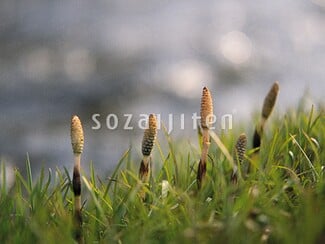
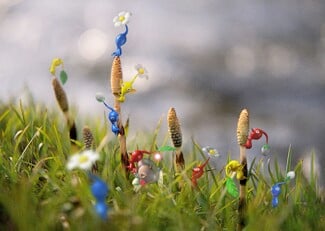
The Pikmin series and its world is built with distinct pieces of imagery, audio, and typefaces. A large portion of the assets used in the games are made from scratch and are proprietary to Nintendo, though occasionally, some of these assets may be taken or contain elements from external sources. This can include commercially-available software libraries, or real-life objects and hardware.
Stock photography
Since the objects and environments within the Pikmin series are often based on human technology and nature in the real world, photography of real items and locations on Earth are a common resource for textures. For the first game, a large amount of these images were taken in Japan by members of the game's own staff.[1] However, it was not uncommon for some few pieces of foliage to be made using graphics from stock photography libraries. For more unnatural materials, this occurred a lot more often. During the development of Pikmin and Pikmin 2, these libraries were primarily sold and distributed on CD-ROMs.
Sozaijiten
Sozaijiten (素材辞典?, lit.: "Material Dictionary") is a series of stock image libraries by Datacraft that is advertised and sold as volumes. The content of each volume is themed (usually around a type of material, part of nature, or event), and were originally distributed on singular CD-ROMs. For Pikmin and Pikmin 2, photographs and artwork from Sozaijiten are used very often and in a myriad of ways.
On Sozaijiten's website, low-resolution previews of every image are available for browsing. The previews come with descriptions; these reveal the original shooting location of certain photos, or some miscellaneous information about the photographed material.
| List of Sozaijiten textures used in Pikmin | |||||
|---|---|---|---|---|---|
| Volume | Name | Source Image | Texture/Screenshot | Description | |
| Vol. 6 四季・自然編
(Seasons and Nature) |
SF085 | 
|

|
The background to a piece of promotional artwork for Pikmin. It is an image of some horsetails, taken in Atsuta, Hokkaido. | |
| Vol. 6 四季・自然編
(Seasons and Nature) |
SF097 | 
|
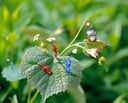
|
The background to a piece of promotional artwork for Pikmin. | |
| Vol. 6 四季・自然編
(Seasons and Nature) |
SF122 | 
|

|
The mountains in the area selection menu. It is a photograph of Mount Kamui and Lake Mashū.
The approximate location is viewable here. | |
| Vol. 6 四季・自然編
(Seasons and Nature) |
SF164 | 
|

|
The main landmass in the area selection menu. It was taken in Shakotan, Hokkaido.
The approximate location is viewable here. | |
| Vol. 13 葉・葉脈編
(Leaves and Leaf Veins) |
SM054 | 
|
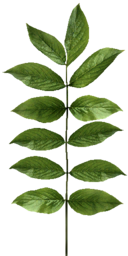
|
Several plants found in the The Impact Site. It is a photograph of an elderberry's leaves. | |
| Vol. 16 皮・年輪編
(Wood Textures) |
SQ166 | 
|
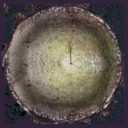
|
The base of several wooden stumps in The Distant Spring. | |
| Vol. 21 宇宙・惑星編
(Space and Planets) |
SV002 | 
|
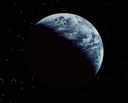
|
PNF-404, during the credits of Pikmin. It is a photograph of Earth. | |
| Vol. 21 宇宙・惑星編
(Space and Planets) |
SV007 | 
|

|
PNF-404, during the good ending cutscene of Pikmin. It is a photograph of Earth. | |
| List of Sozaijiten textures used in Pikmin 2 | |||||
|---|---|---|---|---|---|
| Volume | Name | Source Image | Texture/Screenshot | Description | |
| Vol. 1 テクスチャー・石編
(Stone Textures) |
SA068 | 
|
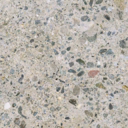
|
Stone used around the geyser in the 2nd sublevel of the Emergence Cave. | |
| Vol. 2 紙・布・木編
(Paper, Cloth, and Wood Textures) |
SB108 | 
|

|
The fabric for the Five-man Napsack. | |
| Vol. 5 空・雲編
(Sky and Clouds) |
SE074 | 
|
The fog in the area selection menu of Pikmin 2. | ||
| Vol. 6 四季・自然編
(Seasons and Nature) |
SF122 | 
|

|
The mountains in the area selection menu. It is a photograph of Mount Kamui and Lake Mashū.
The approximate location is viewable here. | |
| Vol. 6 四季・自然編
(Seasons and Nature) |
SF164 | 
|

|
The main landmass in the area selection menu. It was taken in Shakotan, Hokkaido.
The approximate location is viewable here. | |
| Vol. 6 四季・自然編
(Seasons and Nature) |
SF190 | 
|

|
Snow used for the Valley of Repose's background image. The image was taken on a beach in Otaru. | |
| Vol. 6 四季・自然編
(Seasons and Nature) |
SF191 | 
|

|
Trees used for the Valley of Repose's background image. The image was taken in Shikaoi, Hokkaido. | |
| Vol. 8 壁・土編
(Walls and Soils) |
SH071 | 
|

|
Used for the build cave background. It has been flipped horizontally.
| |
| Vol. 8 壁・土編
(Walls and Soils) |
SH096 | 
|
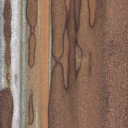
|
Several metallic sheets buried in the ground that appear in the Perplexing Pool. | |
| Vol. 13 葉・葉脈編
(Leaves and Leaf Veins) |
SM074 | 
|

|
Large leaves in the Perplexing Pool. It is a photograph of Galax. | |
| Vol. 16 皮・年輪編
(Wood Textures) |
SQ166 | 
|

|
The base of several wooden stumps in the Perplexing Pool and a unique cave unit seen in the Hole of Heroes. | |
| Vol. 21 宇宙・惑星編
(Space and Planets) |
SV001 | 
|
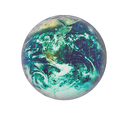
|
PNF-404, in the Japanese Pikmin 2 Guidebook. It is a photograph of Earth. It is also used for Koppai in the opening of Pikmin 3. | |
| Vol. 21 宇宙・惑星編
(Space and Planets) |
SV161 | 
|

|
A galaxy that can be seen in the Debt Repayment Cinema in Pikmin 2. It is a photograph of a spiral galaxy in the Pegasus constellation. | |
| Vol. 21 宇宙・惑星編
(Space and Planets) |
SV186 | 
|

|
Nebulae that can be seen in the Opening and Debt Repayment Cinemas in Pikmin 2. It is a photograph of the Orion Nebula. | |
| Vol. 21 宇宙・惑星編
(Space and Planets) |
SV187 | 
|

|
Nebulae that can be seen in the Opening and Debt Repayment Cinemas in Pikmin 2. It is a photograph of the Orion Nebula. | |
| Vol. 24 大理石編
(Marbles) |
SY089 | 
|

|
The texture for the Priceless Statue and Worthless Statue. It is an image of Grigio Carnico marble. | |
| Vol. 53 木目・組木・あじろ編
(Grain, Interlocked and Braided Wood) |
CD123 | 
|

|
The texture used for the Shock Therapist's wooden base. It is an image of rosewood. | |
| Vol. 53 木目・組木・あじろ編
(Grain, Interlocked and Braided Wood) |
CD138 | 
|

|
Used for the flooring cave background. It is an image of 5-inch white oak flooring. Several planks of wood were stretched.
| |
Bakku no Oni
Bakku no Oni (バックの鬼?, lit.: "Background Demon") is a series of stock image libraries that was distributed by A&P CO-ORDINATOR JAPAN. Its volumes were themed after specific types of aesthetics. Images from "Bakku no Oni SABI 2" were often used as textures for the caves in Pikmin 2.
| List of Bakku no Oni textures used in Pikmin 2 | |||||
|---|---|---|---|---|---|
| Volume | Name | Source Image | Texture/Screenshot | Description | |
| 寂2
(SABI 2) |
RUST-08 | 
|

|
Used for a small metal plate in the center of the room_hitode3x3_5_metal cave unit.
| |
| 寂2
(SABI 2) |
RUST-27 | 
|
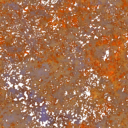 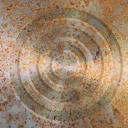
|
Used for the dark brown metal in many metallic cave units, and the top of the bucket in the room_big_kusachi garden cave unit.
| |
| 寂2
(SABI 2) |
RUST-34 | 
|
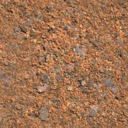
|
Used as the center room's floor in room_white14x12_metal, the main cave unit in sublevel 3 of the White Flower Garden.
| |
| 寂2
(SABI 2) |
RUST-36 | 
|
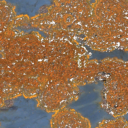
|
The blue rusted metal used in many metallic cave units. | |
| 寂2
(SABI 2) |
RUST-41 | 
|
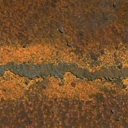
|
Used in the small path in room_white14x12_metal, and as the circular rim in the Titan Dweevil's arena, room_oootakara_tile.
| |
VisualDisk
VisualDisk is a series of stock image libraries that was distributed by dizáin. Similar in scope to Sozaijiten, there was a very large amount of volumes released and high variety in its content. However, it is used sparsely in Pikmin 2.
| List of VisualDisk textures used in Pikmin 2 | |||||
|---|---|---|---|---|---|
| Volume | Name | Source Image | Texture/Screenshot | Description | |
| M-02 Metals | M2_01 | 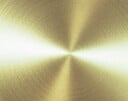
|

|
Used for the top of the bucket in the room_big_kusachi garden cave unit. It is mixed with "RUST-27" from Bakku no Oni SABI 2.
| |
| M-10 Leaves | M10_05 | 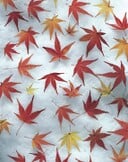
|
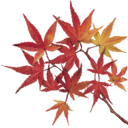
|
Used for various autumn leaves on Pikmin 2's title screen, and in the intro for the Wistful Wild when landing in the area for the first time. | |
| M-10 Leaves | M10_43 | 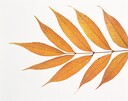
|
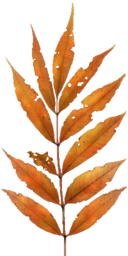
|
Used for several plants in the Wistful Wild. The leaves have been edited to look like they are decaying. | |
Audio samples
Similar to graphics, creating game audio often involves the sampling of various sound libraries. The games within the Pikmin series are a good example, where a large amount of audio can be sourced back to a number of different commercially-released products. These products are used to create the individual instrument samples and sound effects in the games, as well as pieces of streamed music. All of the music in Pikmin, Pikmin 2, and Pikmin 3 use audio from digital instruments and synthesizers; instances of musicians performing live on real acoustic instruments are highly uncommon in the games. The new music composed by Babi for Pikmin 3 Deluxe is one of the very few occasions where this was done.[2]
Pikmin's music
Pikmin's soundtrack was composed by Hajime Wakai. He uses the Kurzweil K2500R and Roland SC-88 synthesizers, and the SampleCell II software. The two aforementioned synthesizers make up the vast majority of sounds heard in the soundtrack, though a few sample CD-ROMs are also seldom used; these CD-ROMs are formatted for SampleCell II, which serves the function of a sampler.
| List of products used in the music of Pikmin | |||||
|---|---|---|---|---|---|
| Product | Image | Year | Format | Details | Demo |
| Roland SC-88 |  |
1994 | Hardware synthesizer | MIDI sound module by Roland, used by Hajime Wakai. Often used for acoustic instruments that the Kurzweil K2500R's sample set lacked. |
|
| Kurzweil K2500R |
1996 | Hardware synthesizer | Professional synthesizer by Kurzweil, used by Hajime Wakai. Dominates most of the soundtrack, alongside the Roland SC-88. |
||
| SampleCell II CD-ROM Library |
 |
1991 | SampleCell CD-ROM | A selection of sounds that came packaged with SampleCell II, by Digidesign. Used for the classical guitar heard in The Impact Site. |
|
| Spectrasonics Supreme Beats |
 |
1995 | SampleCell CD-ROM | Sample library by Spectrasonics. Used for several sounds in Pikmin's main theme. |
|
| Best Service Ultra Gigapack |
 |
1995 | SampleCell CD-ROM | Sample library by Best Service. Used for the piano in The Forest of Hope, and some percussion in Final Boss Battle. |
|
Pikmin 2's music
Pikmin 2's soundtrack was composed by Hajime Wakai and Kazumi Totaka, and features a wider range of products used. The Kurzweil K2500R and Roland SC-88 are once again prominently used by Hajime Wakai. SampleCell II no longer sees any use by Hajime Wakai for this title; instead, sounds from InVision Lightware 1, East-West Drums + Percussion, and the AKAI CD3000 Sound Library can be heard, all of which came packaged with the AKAI CD3000 sampler. Kazumi Totaka uses the Yamaha S90 and a slew of different sample libraries for his music.
| List of products used in the music of Pikmin 2 | |||||
|---|---|---|---|---|---|
| Product | Image | Year | Format | Details | Demo |
| Roland SC-88 |  |
1994 | Hardware synthesizer | MIDI sound module by Roland, used by Hajime Wakai. Often used for acoustic instruments that the Kurzweil K2500R's sample set lacked. |
|
| Kurzweil K2500R |
1996 | Hardware synthesizer | Professional synthesizer by Kurzweil, used by Hajime Wakai. Dominates most of the soundtrack, alongside the Roland SC-88. |
||
| Yamaha S90 | 2002 | Hardware synthesizer | Professional synthesizer by Yamaha, used by Kazumi Totaka. Its sound set can be expanded with plug-in boards. |
||
| Yamaha PLG150-DX |
 |
1999 | Plug-in board | Plug-in board synthesizer, used by Kazumi Totaka with his Yamaha S90. It comes with several sounds from the Yamaha DX7, and is present in several cave songs. |
|
| Yamaha PLG150-VL |
 |
1999 | Plug-in board | Plug-in board synthesizer, used by Kazumi Totaka with his Yamaha S90. The "Lite Pipe" sound was used for Concrete 2, and the bassoon is used in 2-Player Battle. |
|
| AKAI CD3000 Sound Library |
 |
1993 | AKAI CD-ROM | A selection of sounds by AKAI that came packaged with the CD3000. It is used in the cutscene scores by Hajime Wakai. |
|
| Drums + Percussion Special Edition |
 |
1993 | AKAI CD-ROM | A selection of sounds by East-West that came packaged with the CD3000. It is used in the cutscene scores by Hajime Wakai. |
|
| InVision Lightware 1 |
 |
1993 | AKAI CD-ROM | A selection of sounds by InVision that came packaged with the CD3000. It is used in the cutscene scores by Hajime Wakai. |
|
| Synclavier Sampler Library |
 |
1994 | AKAI CD-ROM | Sample library by Ilio, used by Kazumi Totaka. A kalimba sample from the World and Orchestral disc is used in two cave themes. |
|
| Best Service Advanced Orchestra |
 |
1997 | AKAI CD-ROM | Renowned orchestral sample library distributed by Best Service. It is used in Hajime Wakai's orchestral scores, and is also in a few songs by Kazumi Totaka. |
|
| SampleCell II CD-ROM Library |
 |
1991 | SampleCell CD-ROM | A selection of sounds that came packaged with SampleCell II, by Digidesign. It has some minor usage by Kazumi Totaka. |
|
| Best Service Ultra Gigapack |
 |
1995 | SampleCell CD-ROM | Sample library by Best Service, used by Kazumi Totaka. A number of sounds from this library are used in cave music. |
|
| Spectrasonics Bass Legends |
 |
1994 | CD-ROM | Sample library by Spectrasonics, used by Kazumi Totaka. The Jaco fretless bass is used in Concrete 2. |
|
| Spectrasonics Supreme Beats |
 |
1995 | CD-ROM | Sample library by Spectrasonics, used by Kazumi Totaka. Many percussion instruments heard in Kazumi Totaka's cave music are from this library. |
|
| Q-Up Arts Voices of Istanbul |
 |
2000 | CD-ROM | Sample library by Q-Up Arts, used by Kazumi Totaka. The Turkish davul from this library was used in Concrete 2 and Grass. |
|
| Series 4000 Sound Effects |
 |
1989 | Audio CD-ROM | Sound effect library by Sound Ideas. Several sound effects are used in Hajime Wakai's and Kazumi Totaka's music. |
|
| Series 6000 Sound Effects |
 |
1992 | Audio CD-ROM | Sound effect library by Sound Ideas. Several sound effects are used in Hajime Wakai's and Kazumi Totaka's music. |
|
| Warner Bros. Sound Effects |
 |
1992 | Audio CD-ROM | Sound effect library by Sound Ideas. An anvil crash sound effect is used in Metal 2. |
|
Pikmin 3's music
Pikmin 3's soundtrack was composed by Asuka Hayazaki, Atsuko Asahi, and Hajime Wakai. It was the first main title to have a soundtrack consisting wholly of streamed music; singular instrument samples do not exist individually within the game itself, although sampling can still occur within the music creation process. The Kurzweil K2500 is still prominent in this soundtrack, but it is being used by Asuka Hayazaki, alongside her KORG Triton Studio.
| List of products used in the music of Pikmin 3 | |||||
|---|---|---|---|---|---|
| Product | Image | Year | Format | Details | Demo |
| Roland SC-88 |  |
1994 | Hardware synthesizer | MIDI sound module by Roland. It has very minor usage in Pikmin 3. |
|
| Kurzweil K2500R |
1996 | Hardware synthesizer | Professional synthesizer by Kurzweil, originally used by Hajime Wakai. It is very prominent in Asuka Hayazaki's music for Pikmin 3. |
||
| KORG Triton Studio |
2002 | Hardware synthesizer | Professional synthesizer by KORG, used by Asuka Hayazaki. It was often used alongside the Kurzweil K2500R. |
||
| Spectrasonics Supreme Beats |
 |
1995 | CD-ROM | Sample library by Spectrasonics, used by Asuka Hayazaki. Several percussive loops were used in the Tropical Wilds. |
|
| Best Service Advanced Orchestra |
 |
1997 | CD-ROM | Orchestral sample library distributed by Best Service, used by Asuka Hayazaki. The snare drum is used in the boss battle music. |
|
| Series 4000 Sound Effects |
 |
1989 | Audio CD-ROM | Sound effect library by Sound Ideas. A cartoon horn toot was used in Bingo Battle's toy theme. | |
| Series 6000 Sound Effects |
 |
1992 | Audio CD-ROM | Sound effect library by Sound Ideas. A cash register sound was used in Bingo Battle's toy theme. | |
| Animal Trax |  |
1996 | Audio CD-ROM | Sound effect library by Sound Ideas. A faint sheep bleat from this library can be heard on the title screen. | |
| ZERO-G Ethnic Flavours |
 |
1996 | Audio CD-ROM | Sample library by ZERO-G, used by Asuka Hayazaki. A West African flute riff is used in the music for the Tropical Wilds. |
|
| East-West Symphonic Orchestra |
 |
2003 | Software instrument | Software instrument by East-West, used by Asuka Hayazaki and Atsuko Asahi. This library was a go-to for a variety of orchestral instruments. |
|
| East-West Ra |
 |
2005 | Software instrument | Software instrument by East-West, used by Asuka Hayazaki and Atsuko Asahi. A pan flute, gamelan, and kalimba from this library are used in some songs. |
|
| Steinberg HALion One |
2006 | Software instrument | Software instrument included in earlier versions of Cubase by Steinberg, used by Atsuko Asahi. | ||
| East-West Stormdrum 2 |
 |
2007 | Software instrument | Software instrument by East-West, used by Asuka Hayazaki. A percussion sample from this library is featured in the Formidable Oak. |
|
| Spectrasonics Omnisphere |
 |
2008 | Software instrument | Software instrument by Spectrasonics. This robust synthesizer is in many parts of the soundtrack. |
|
| KONTAKT Factory Library |
 |
2010 | Software instrument | A selection of sounds that came packaged with the full version of KONTAKT, by Native Instruments. It was used by Atsuko Asahi. | |
| Apple Logic Pro X |
 |
2004 | DAW | Digital audio workstation, used by Hajime Wakai, Soshi Abe, and Babi. It can be heard often in the additional music of Pikmin 3 Deluxe. | |
Pikmin 4's music
Pikmin 4's soundtrack was composed by Asuka Hayazaki, Kenta Nagata, and Soshi Abe. Due to the recency of this soundtrack, it is the most subject to complex sampling techniques and higher sound design standards. The majority of the instruments used are also now software instruments. Although a few old sounds from the Kurzweil K2500 and Roland SC-88 are still occasionally used, every instance of a preset is merely a singular sample; no evidence suggests these hardware synths were physically present during production.
| List of products used in the music of Pikmin 4 | |||||
|---|---|---|---|---|---|
| Product | Image | Year | Format | Details | |
| Roland SC-88 |  |
1994 | Hardware synthesizer | MIDI sound module by Roland. It has very minor usage in the soundtrack. | |
| Kurzweil K2500R |
1996 | Hardware synthesizer | Professional synthesizer by Kurzweil, originally used by Hajime Wakai. It has minor usage in the soundtrack. | ||
| Best Service Advanced Orchestra |
 |
1997 | CD-ROM | Orchestral sample library distributed by Best Service. The xylophone sample is used in some songs. | |
| East-West Symphonic Orchestra |
 |
2003 | Software instrument | Software instrument by East-West. It is used in some of the boss battle themes. | |
| Heavyocity Evolve |
2008 | Software instrument | Software instrument by Heavyocity. It is used in some of the boss battle themes. | ||
| Soniccouture Music Boxes |
 |
2011 | Software instrument | Free software instrument by Soniccouture. It is used for the three music box treasures. | |
| Native Instruments Cuba |
 |
2013 | Software instrument | Software instrument by Native Instruments. The hand percussion ensemble is heard when the Waterwraith is vulnerable. | |
Hey! Pikmin's music
Hey! Pikmin's soundtrack was composed by Masato Kouda and Kento Hasegawa. Since these two composers are unique to this title, the utilized libraries are also notably unique to this soundtrack. Similarly to Pikmin 3, its soundtrack is streamed, though the absence of older hardware synthesizers marks a turning point in the desired fidelity of instruments; this game's musical compositions mainly consist of software instruments, and this preference over older, less realistic hardware instruments can be further examined in the music of Pikmin 4.
| List of products used in the music of Hey! Pikmin | |||||
|---|---|---|---|---|---|
| Product | Image | Year | Format | Details | Demo |
| AMG Now CD-ROM |
 |
1994 | CD-ROM | Sample library by AMG. Some sampled horn stabs are used in Over Wintry Mountains. |
|
| VSL Special Edition Volume 1 |
 |
2007 | Software instrument | Software instrument by Vienna Symphonic Library. A vibraphone is used for the Brilliant Garden's theme. |
|
| Spectrasonics Omnisphere |
 |
2008 | Software instrument | Software instrument by Spectrasonics. This robust synthesizer is in many parts of the soundtrack. |
|
| Discovery Series: West Africa |
 |
2010 | Software instrument | Software instrument by Native Instruments. A djembe is used in "Lushlife Murk area - back side". | |
| Best Service Ethno World 5 |
 |
2010 | Software instrument | Software instrument by Best Service. Many exotic instruments from this collection are utilized in the soundtrack. One notable and frequently-used instrument is the Dallape accordion. |
|
| Spectrasonics Stylus RMX |
 |
2010 | Software instrument | Software instrument by Spectrasonics. A percussive loop titled "125-Evil Echo" is used for the Emperor Bulblax boss battle at The Last Lair. Curiously, the loop listed right before it in the interface is called "125-Emperor". |
|
| Heavyocity Damage |
 |
2011 | Software instrument | Software instrument by Heavyocity. A synthetic loop is used during the "Inside the S.S. Dolphin II - boss found" cutscene theme. |
|
| MusicLab RealGuitar 4 |
 |
2015 | Software instrument | Software instrument by MusicLab. The nylon fingered guitar is used for Ravaged Rustworks' theme. |
|
Sound effects
Listed below are all currently known products used to create the sound effects within the Pikmin series.
| List of products used for sound effects[3] | ||||||||
|---|---|---|---|---|---|---|---|---|
| Product | Image | Year | Format | |||||
| E-MU Proteus/2 Orchestral |
1990 | Hardware synthesizer | Used | Used | Absent | Absent | ||
| E-MU Proteus/3 World |
1991 | Hardware synthesizer | Used | Absent | Absent | Absent | ||
| Roland SC-88 |  |
1994 | Hardware synthesizer | Used | Used | Used | Used | |
| Kurzweil K2500R |
1996 | Hardware synthesizer | Used | Used | Used | Used | ||
| SampleCell II CD-ROM Library |
 |
1991 | SampleCell CD-ROM | Used | Used | Absent | Absent | |
| Best Service Ultra Gigapack |
 |
1995 | SampleCell CD-ROM | Absent | Used | Absent | Absent | |
| Spectrasonics Distorted Reality |
 |
1995 | CD-ROM | Absent | Used | Absent | Absent | |
| Spectrasonics Supreme Beats |
 |
1995 | CD-ROM | Used | Used | Used | Used | |
| Sound Ideas Sampler Library |
 |
1987 | Audio CD-ROM | Used | Used | Absent | Absent | |
| Series 4000 Sound Effects |
 |
1989 | Audio CD-ROM | Used | Used | Used | Absent | |
| Series 6000 Sound Effects |
 |
1992 | Audio CD-ROM | Used | Used | Used | Used | |
| Universal Studios Sound Effects |
 |
1992 | Audio CD-ROM | Used | Used | Absent | Absent | |
| Warner Bros. Sound Effects |
 |
1992 | Audio CD-ROM | Used | Used | Used | Used | |
| Spectrasonics Omnisphere |
 |
2008 | Software instrument | Absent | Absent | Used | Absent | |
Synthesizers
Kurzweil K2500
The Kurzweil K2500 is a synthesizer manufactured by Kurzweil Music Systems in 1996. The Kurzweil K2500R is its rackmount variant, and the specific model that was owned and used by Hajime Wakai. Typically, rackmount versions of synthesizers are identical in functionality, but they lack a physical keyboard. This makes them more compact and easy to cram into a studio space; however, it is intended that they be connected to an external MIDI device, such as a musical keyboard, a computer, or some other MIDI-compatible instrument in order to use them.
A lesser-known synthesizer, it is the signature synth of Hajime Wakai, and a staple of the audio design in the Pikmin series as a whole. It is used in Pikmin, Pikmin 2, Pikmin 3, Pikmin 3 Deluxe, and Pikmin 4. In some parts of Pikmin 3, Asuka Hayazaki uses this synthesizer. Soshi Abe uses samples from it for Pikmin 3 Deluxe and Pikmin 4.
Also used within the Pikmin games is the "K25 FARM". It is a collection of several hundred new programs for the K2500. These exclusive presets came on a floppy disk with brand new purchases of the synthesizer.
Roland SC-88
The Roland SC-88 is a General MIDI-based synthesizer, manufactured by Roland in 1994. An entry in the Roland Sound Canvas series, it has 654 default instrument presets and 22 drumset presets that are designed to perfectly conform to the General MIDI standard, making it excellent for the playback of MIDI songs. It is still useful as a compositional tool; the sounds from the Roland Sound Canvas line of synthesizers are very common in video games. Compressed samples of audio from a SC-55 are even utilized for the Microsoft GS Wavetable Synth, the default "soundfont" for MIDI playback on most computers.[4]
It is used primarily in the music of Pikmin and Pikmin 2, by Hajime Wakai. Alongside the Kurzweil K2500, these two synthesizers make up the vast majority of instrument samples in those games.
Yamaha S90
The Yamaha S90 is a synthesizer manufactured by Yamaha Corporation in 2002. It has 384 instrument presets and 48 drumset presets, and its acoustic instruments in particular are much more realistic than the older Kurzweil K2500R and Roland SC-88.
The Yamaha S90 is commonly used by Kazumi Totaka; in the Pikmin series, it has only been used in the music of Pikmin 2.
Expansion boards
Many of Yamaha's synthesizers produced around 1998 to 2003 featured support for the "Modular Synthesis Plug-in System". This allowed for the synthesizers's preset count to be expanded by plugging in an expansion board. In total, 12 of these boards were produced. A few of them contain just basic sets of additional samples, while others are fully-fledged synthesizers.
Along with his Yamaha S90, Kazumi Totaka uses the PLG150-DX and PLG150-VL expansion boards for some songs for Pikmin 2. The two boards use FM synthesis and physical modelling synthesis respectively.
Fonts
Most of the fonts used in the Pikmin games are commercially-available fonts created by Dynacomware or Fontworks. Originally, they were sold bundled together with many other typefaces and distributed on CD-ROMs, but the individual fonts are still available online. Because of their availability, usage of these fonts in other media may be mistaken as a reference to the Pikmin series.
DF Craft Sumi
DF Craft Sumi is a typeface created by Dynacomware. "DFCraftSumi Std W9" is used in Pikmin and Pikmin 2 for the bubble-like letters that appear in some menus and cutscenes, and for the end credits in the Pikmin Short Movies. In Pikmin 3 and Hey! Pikmin, a modified version of this font is used.
The saved game selection menu in Pikmin.
The Onion menu in Pikmin.
Title screen for Pikmin 2.
One of the day results menu screens in Pikmin 2.
DF POP 1
DF POP 1 is a typeface created by Dynacomware. "DFPOP1 Std W3" is used as the main text font in Pikmin, such as for Olimar's monologs.
Title screen of Pikmin.
One of Olimar's voyage logs in Pikmin.
One of Olimar's monologs in Pikmin.
The enemy reel in Pikmin.
Seurat
Seurat is a typeface created by Fontworks. "Seurat Pro DB" is used as the main text font in Pikmin 2 and Hey! Pikmin, as seen in the ship's dialogs and other various menu elements.
The mail at the day results menu in Pikmin 2.
A dialog box in the Treasure Hoard.
The rules being explained in the 2-Player Battle menu.
The S.S. Dolphin II talking to Captain Olimar during the tutorial.
The Hey! Pikmin logs menu. The question mark icons also use the Seurat typeface.
Rodin NTLG
Rodin NTLG is a typeface created by Fontworks. It is one of the most commonly used typefaces by Nintendo, and has distinct usage within the Pikmin series:
- Carrying numbers in Pikmin, Pikmin 2, and Pikmin 3 all use "RodinNTLG Pro UB".
- The text for "World Map" in an early menu for Pikmin uses "RodinNTLG Pro DB".
- Poko totals of objects returned to the Research Pod in Pikmin 2 (when they do not trigger a cutscene) use "RodinNTLG Pro UB".
- The health and safety warning in Pikmin 2 uses Rodin NTLG in three different weights.
- Mission Mode's timer in Pikmin 3 uses "RodinNTLG Pro UB".
- Cardboard and tin boxes in Pikmin 3 use "RodinNTLG Pro EB" for the 20 written on them.
RodinNTLG Pro DB is also the main text font in Pikmin 3. It is used for on-screen character dialog, text displayed on the KopPad, and other various menu elements.
The Side Stories menu in Pikmin 3 Deluxe.
The KopPad's Exploration Notes menu.
A data file obtained in Pikmin 3.
A HUD element in Pikmin 3.
New Rodin
New Rodin is a typeface created by Fontworks. "NewRodin Pro DB" is used in Pikmin 3 for the numbers in the countdown at sunset. In Pikmin 4, a modified version of the typeface is used commonly throughout the game.
DF Gothic P
DF Gothic P is a typeface created by Dynacomware. "DFGothicP W3" is used for the staff credits in Pikmin 3. The characters have been resized so that they take up similar amounts of horizontal space.
Minor fonts
Chiaro
Chiaro is a typeface created by Fontworks. "Chiaro Std B" is used exclusively on the saved game selection menu in Pikmin and Pikmin 2.
Pop Fury
Pop Fury is a typeface created by Fontworks. "PopFury Std B" is present in Pikmin as an unused font texture, testFont.txe.
Rowdy
Rowdy is a typeface created by Fontworks. "Rowdy Std EB" is used in Pikmin 3 for the icons of the +10 Pikmin and +5 Rare Pikmin Roulette Wheel items in Bingo Battle.
Proprietary fonts
Some text that appears in the games use fonts that are uniquely created for the Pikmin series itself.
Pikmin 3 bubble-like font
An updated variant of DFCraftSumi Std W9 is used in Pikmin 3 and Hey! Pikmin. It highly resembles the original typeface, but many minor changes have been made to improve readability, such as making the tails of certain characters longer and their widths more consistent.
Hocotate Freight text
The logo for Hocotate Freight uses a uniquely designed font. It is alien-like, but still legible English.
Koppaite text
- Main article: Koppaite text.
In Pikmin 3 and Pikmin 4, an in-universe written language appears very frequently on technology and as a background element throughout various in-game menus. The text appears as an assortment of illegible alien symbols, but these characters are actually translatable into the 26 letters in the English alphabet, which reveal some small secrets when various instances of the text are deciphered.
Trivia
- The Kurzweil K2500R and Roland SC-88 alone make up nearly 90% of the soundtrack for Pikmin, and over 55% of the soundtrack for Pikmin 2.[3]
- The in-game instruments that play the sequenced music of Pikmin 1 and Pikmin 2 use envelopes, of which there exist four types with different attenuations. There exists a basic "Linear", "Square", and "SquareRoot" attenuation, but only the fourth type gets used, curiously named "SampleCell".[5] This fourth envelope type is similar to the SampleCell II software's instrument attenuation, suggesting that the instruments may have been programmed and designed in this software, prior to their in-game implementation.
References
- ^ YouTube video of footage from E3, where it is stated that some of the materials used in Pikmin are from around Shigeru Miyamoto's neighborhood (at 10:10)
- ^ Production credits on GRANDFUNK's website
- ^ a b Detailed spreadsheet that documents sound sources used in the series, maintained by fans on Google Sheets
- ^ YouTube video of a live comparison between the SC-55 (via the virtual SCVA plugin) and the Microsoft GS Wavetable Synth
- ^ From instruction
0x80478be0of the US Demo 17 Pikmin 2 DOL; functionJASOscillator::relTableSampleCellwith debugging symbols.
